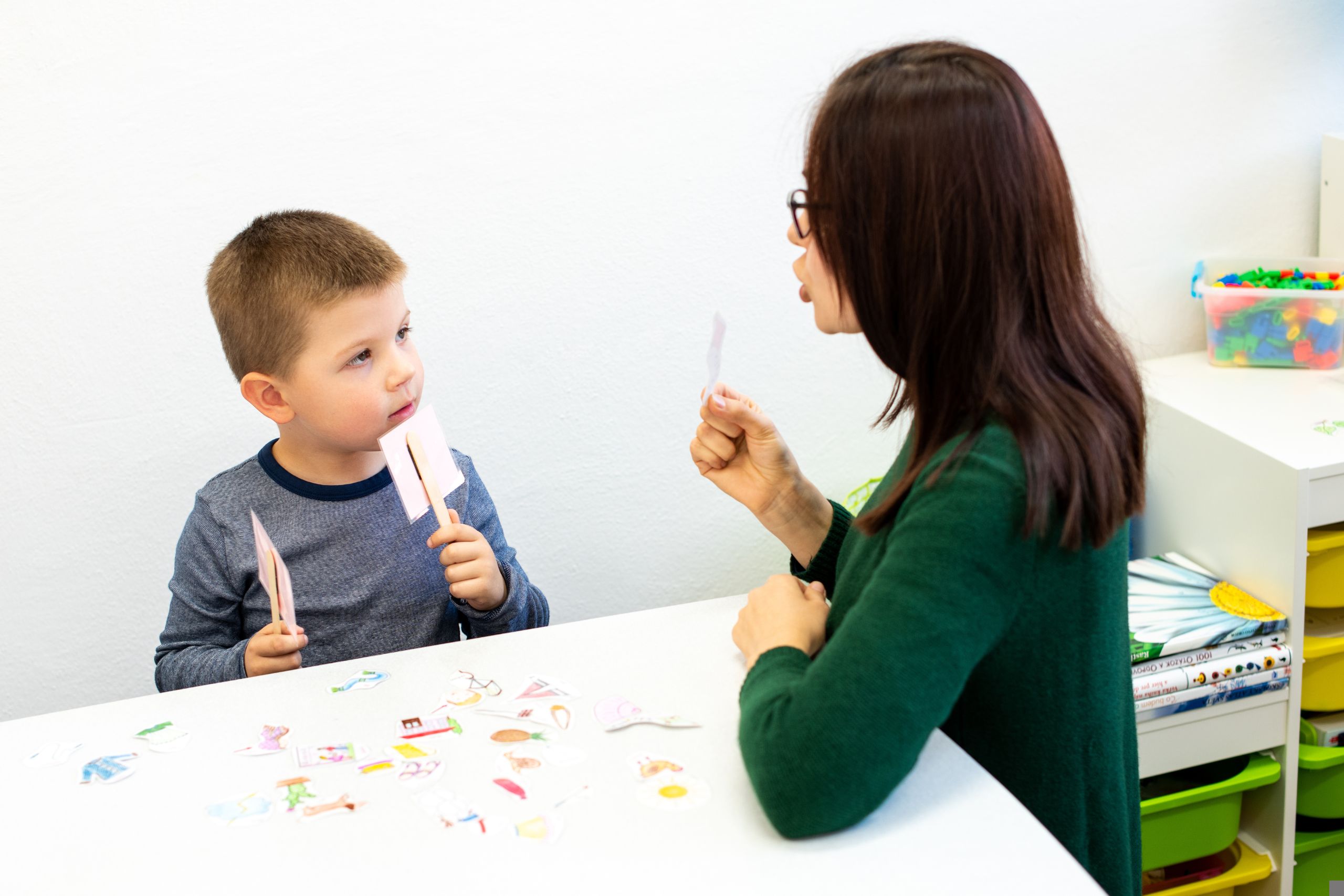Blog

Voice Disorders in Children: Critical Warning Signs Every Parent Should Recognize
As Cleveland speech therapists, we know it’s not unusual for kids to experiment with funny voices, whisper secrets, or even lose their voice after an exciting day at the playground. But when should playful vocal exploration become a cause for concern? Understanding the difference between normal childhood vocal behaviors and potential voice disorders in children can be crucial for your child’s long-term communication health and overall development.
At Therapy and Wellness Connection in Brecksville, we’ve helped many families navigate the complexities of pediatric voice disorders. This comprehensive guide will help you recognize the warning signs that shouldn’t be ignored and understand when it’s time to seek professional Cleveland speech therapy services.
Understanding Voice Disorders in Children
Voice disorders in children affect how the voice sounds, feels, or functions during speech. Unlike adults, children’s voices are constantly changing as they grow and develop, making it challenging for parents to distinguish between normal vocal development and concerning symptoms.
According to the National Institute on Deafness and Other Communication Disorders (NIDCD), approximately 1.4% of U.S. children experience a voice disorder that lasts for a week or longer during any given year. This statistic represents hundreds of thousands of children nationwide who struggle with voice-related challenges that can significantly impact their daily lives, academic performance, and social interactions.
The implications extend far beyond simple hoarseness. Pediatric voice disorder studies indicate that untreated voice disorders can affect both the physical and mental health of children, potentially leading to academic difficulties, social withdrawal, and decreased self-esteem as children become self-conscious about how they sound to their peers.

Red Flag Warning Signs That Demand Attention
Persistent Hoarseness or Voice Changes
The most common and recognizable sign of a voice disorder is persistent hoarseness that lasts longer than two weeks without an obvious cause like a cold or illness. Normal childhood hoarseness typically resolves within a few days to a week as underlying infections clear up.
What to watch for:
- Consistently rough, raspy, or breathy voice quality
- Voice that sounds strained or effortful
- Dramatic changes in pitch (unusually high or low)
- Voice that “cracks” frequently, especially in younger children
- Complete voice loss (aphonia) that persists beyond typical illness recovery
Vocal Fatigue and Discomfort Symptoms
Children with voice disorders often experience physical discomfort related to voice use, though they may not always articulate these feelings clearly.
Key indicators include:
- Frequent complaints of throat pain or “tiredness” after talking
- Excessive throat clearing throughout the day
- Persistent coughing without other cold symptoms
- Child avoiding speaking situations they previously enjoyed
- Complaints that talking “hurts” or feels difficult
- Noticeable decrease in vocal volume or projection
Breathing and Vocal Quality Changes
Voice disorders often manifest through changes in how children breathe while speaking or singing.
Critical signs:
- Audible breathing sounds (stridor) during speech or rest
- Shortness of breath during normal conversation
- Voice that sounds “breathy” or like air is escaping
- Inability to speak loudly even when trying
- Voice quality that deteriorates throughout the day
Behavioral and Social Changes
Children may unconsciously modify their behavior when experiencing voice difficulties, and these changes can be subtle but significant indicators.
Behavioral red flags:
- Reluctance to participate in classroom discussions
- Avoiding phone conversations or video calls
- Decreased participation in singing, reading aloud, or performance activities
- Frustration when others ask them to repeat themselves
- Social withdrawal, particularly from activities requiring verbal communication
- Changes in academic performance, especially in areas requiring oral participation
Causes of Voice Disorders
While some voice disorders could be traced to vocal abuse/misuse and environmental factors (exposure to second-hand smoke, etc.), our Cleveland speech therapy center most often treats those with an underlying medical cause.
Medical Conditions and Physical Factors
Several medical conditions can contribute to voice disorders in children, ranging from temporary issues to more complex conditions requiring specialized care.
Medical considerations:
- Laryngopharyngeal reflux (acid reflux affecting the throat and voice box)
- Respiratory infections that cause prolonged inflammation
- Allergies leading to chronic throat irritation and post-nasal drip
- Structural abnormalities of the larynx or vocal folds
- Neurological conditions affecting vocal control
- Vocal fold lesions, including nodules or polyps
When Professional Cleveland Speech Therapy Becomes Essential
The Two-Week Rule and Beyond
While minor voice changes are common during childhood development, any voice disorder lasting longer than two weeks without improvement warrants professional evaluation. This timeline allows for normal recovery from common illnesses while ensuring that persistent problems receive appropriate attention.
Immediate consultation indicators:
- Complete voice loss lasting more than 48 hours.
- Breathing difficulties accompanying voice changes.
- Severe throat pain preventing normal eating or drinking.
- Voice changes following an injury or trauma.
- Sudden onset voice changes without apparent cause.
Our Cleveland speech therapy evaluation process typically involves some combination of detailed voice and medical history assessment, acoustic analysis of voice quality and function, visual examination of vocal folds (when indicated) and assessment of vocal behaviors and technique. Ultimately, we may develop a comprehensive treatment plan tailored to the child’s specific needs.
Treatment Approaches That Make a Difference
Voice Therapy Techniques for Children
Pediatric voice therapy differs significantly from adult approaches. Our Cleveland speech therapy team will incorporate play-based learning, age-appropriate concepts, and family involvement to achieve lasting results.
Effective treatment components:
- Vocal hygiene education adapted for the child’s developmental level
- Breathing techniques presented through games and activities
- Voice rest protocols that work within family routines
- Resonant voice techniques taught through fun exercises
- Environmental modifications to support vocal health
- Parent and teacher education for consistent support
Taking Action for Your Child’s Voice Health
If you’ve recognized any of the warning signs described in this article, or if you have concerns about your child’s voice that aren’t captured here, don’t hesitate to seek professional guidance from our expert speech-language pathologists. Early intervention consistently produces better outcomes and can prevent minor voice concerns from developing into more complex, long-term challenges.
At Therapy and Wellness Connection in Brecksville, our experienced Cleveland speech therapy team specializes in pediatric voice disorders and understands the unique challenges facing children and families in our community. We provide comprehensive evaluations, evidence-based treatment approaches, and ongoing support to help your child develop and maintain a healthy, strong voice throughout their life.
Therapy & Wellness Connection – your connection to a life without limitations – provides speech therapy to children in Akron, Cleveland, Brecksville-Broadview Heights and surrounding communities. We also offer summer camp, day programs, education services, vocational counseling and more. Call us at (330) 748-4807 or send us an email.
Additional Resources:
About 1 in 12 children has a disorder related to voice, speech, language, or swallowing, June 11, 2015, National Institute on Deafness and Other Communication Disorders
More Blog Entries:
